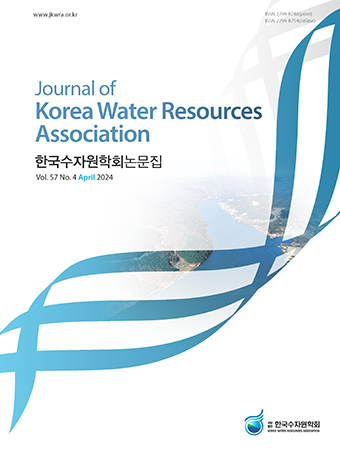Research Article
Abstract
References
Information
- Publisher :KOREA WATER RESOURECES ASSOCIATION
- Publisher(Ko) :한국수자원학회
- Journal Title :Journal of Korea Water Resources Association
- Journal Title(Ko) :한국수자원학회 논문집
- Volume : 55
- No :12
- Pages :1283-1293
- Received Date : 2022-09-15
- Revised Date : 2022-11-16
- Accepted Date : 2022-11-18
- DOI :https://doi.org/10.3741/JKWRA.2022.55.S-1.1283




 Journal of Korea Water Resources Association
Journal of Korea Water Resources Association










